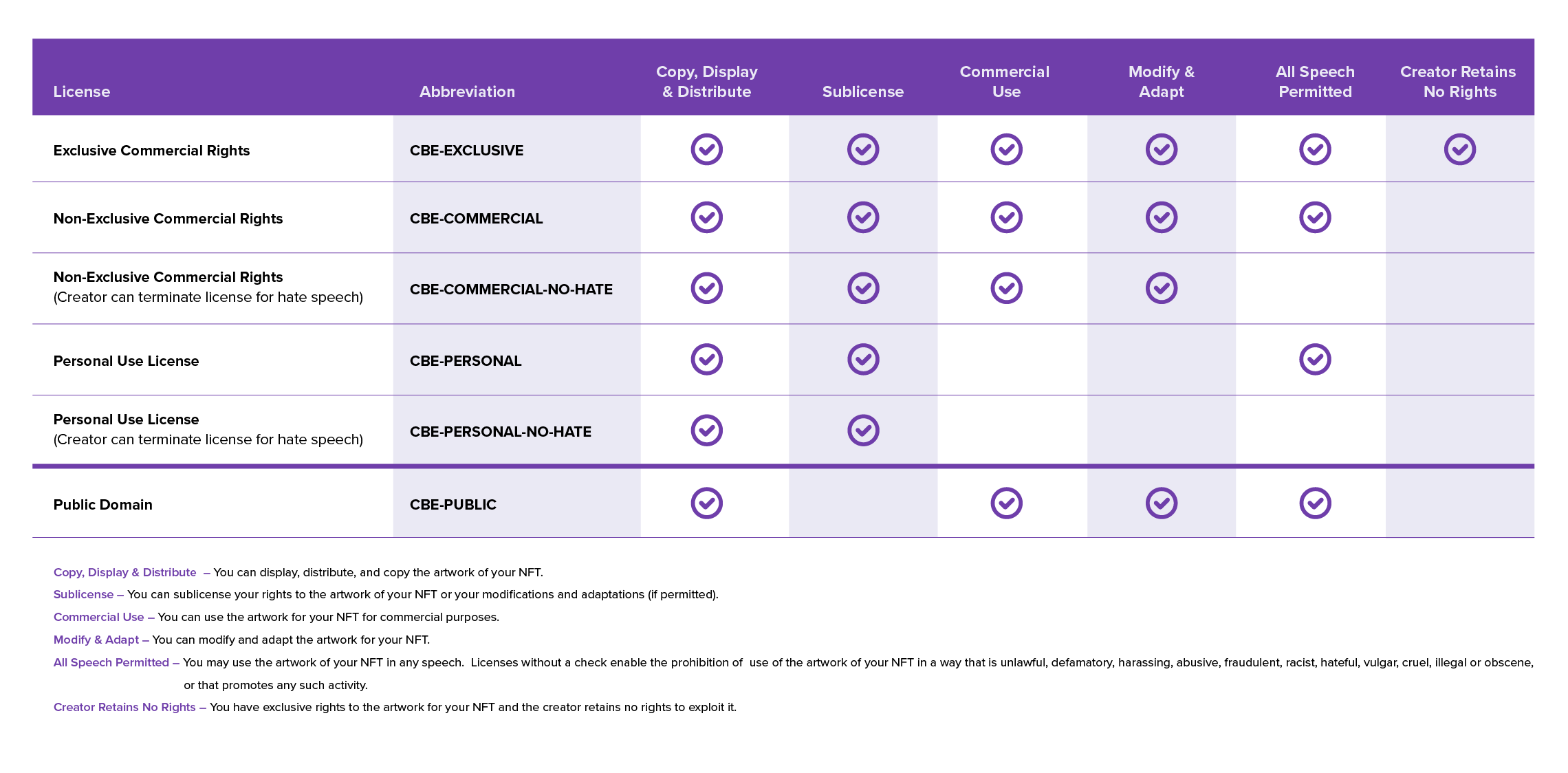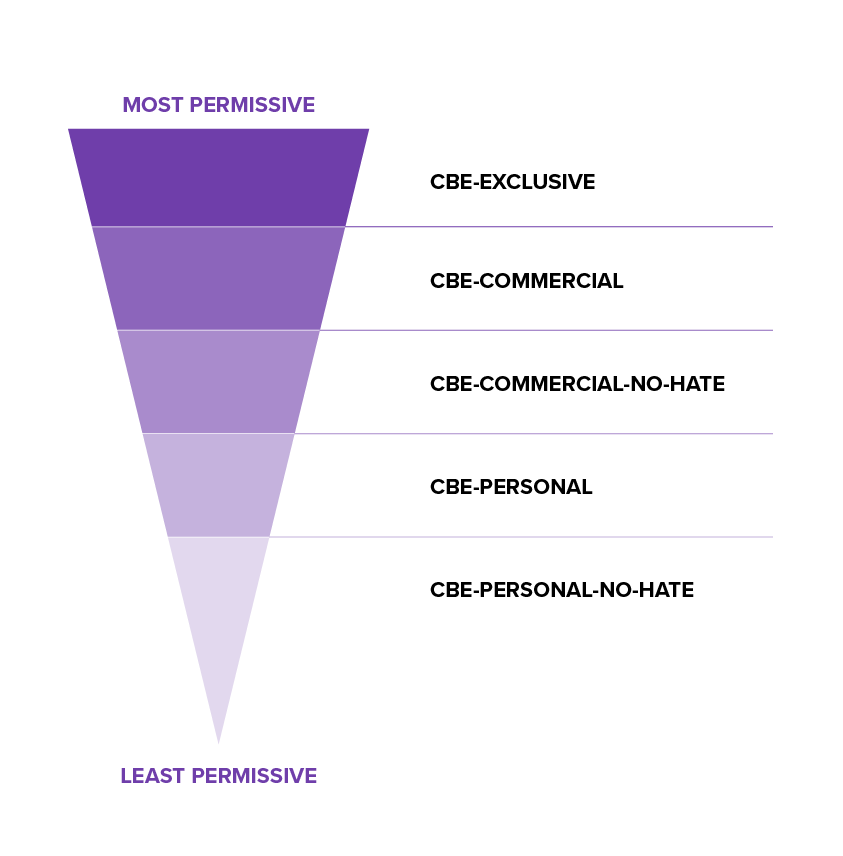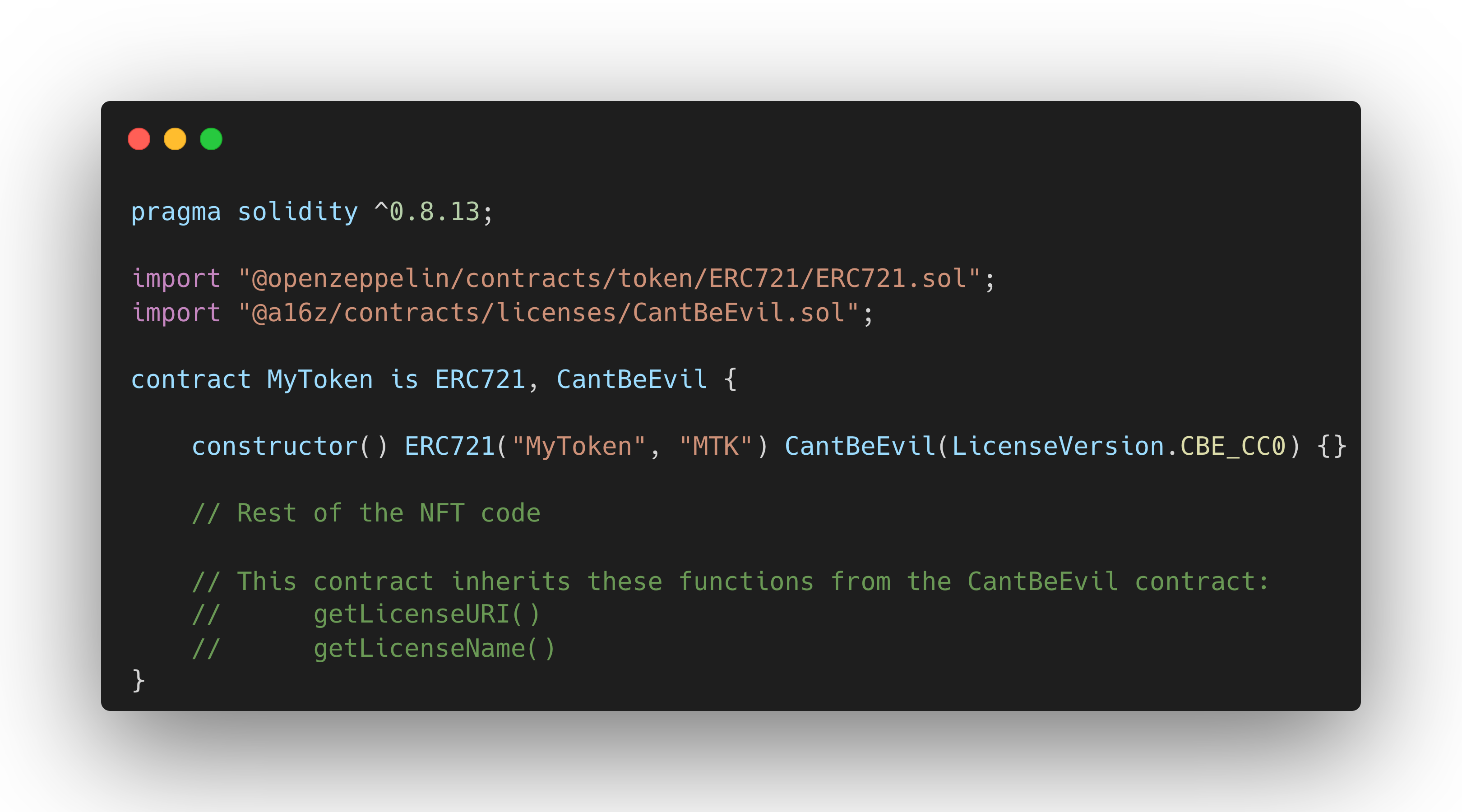Two decades ago, the newly formed Creative Commons (CC) released its first set of free, public licenses, enabling creators to open up aspects of their copyrighted work to the public for sharing, remixing, and reuse beyond the default “all rights reserved” notice. Today more than two billion CC-licensed works exist — among them the popular xkcd webcomics by Randall Munroe; user-generated content sites like Flickr; open access to digital images of public-domain artworks displayed in New York’s Metropolitan Museum of Art; the online science journal PLOS One; and educational resources like Khan Academy and Wikipedia.
A key feature of the Creative Commons model is levels of permissions granted by the original creators or copyright holders — whether for adaptations, derivatives, commercial use, and so on — with CC0 being the most permissive as it essentially dedicates the copyrights to the public domain. Previous copyright licensing regimes were overly restrictive for many creators, and couldn’t keep pace with what the internet and then-new digital technologies made possible. This limited creators and the larger community from participating in shared “culture and knowledge production,” a movement that is only growing in importance today.
Now that web3 innovations are testing the limits of traditional legal frameworks, it’s time for a new set of licenses, designed specifically for non-fungible tokens, or NFTs. The recent wave of CC0 (no-rights reserved) NFT projects, for example, has spotlighted the Creative Common’s most permissive agreement, but prominent creators (including record-smashing graphic artist Beeple) have used some form of CC license for years, while other NFT projects choose different customized terms. However, many NFT projects omit licenses altogether, or draft licenses that create more ambiguity than they resolve. Some copyright vulnerabilities have led to significant confusion around NFT licenses, and a number of other legal problems.
To help address these issues, we’re releasing a set of free, public “Can’t Be Evil” Licenses, designed specifically for NFTs and inspired by the work of Creative Commons. The licenses are freely available for use by the community, and serve three goals: (1) to help NFT creators protect (or release) their intellectual property (IP) rights; (2) to grant NFT holders a baseline of rights that are irrevocable, enforceable, and easy to understand; and (3) to help creators, holders, and their communities unleash the creative and economic potential of their projects with a clear understanding of the IP framework in which they can work. Since most early-stage projects don’t have access to legal resources, we worked with some of the foremost IP lawyers in the web3 space to design six types of broadly applicable NFT licenses and make them available for all.

The case for NFT-specific licenses
Many people buy NFTs to own an avatar, an artwork, or any number of other creative outputs — but the reality is they usually can’t be sure of what they’re getting. When you buy an NFT today, you’re usually purchasing a tokenID (stored on a blockchain), along with metadata that “points” or refers to some other content file (typically stored off-chain, though there are examples of fully on-chain artwork). This fact causes confusion regarding rights of NFT buyers in the vast majority of cases.
US copyright laws do not automatically grant buyers of artwork (both traditional and digital works) the right to reproduce, adapt, or even publicly display the artwork. Without a license or assignment of the copyright from the NFT creator, the buyer cannot exercise any of the rights under copyright (such as reproduction, adaptation, and public display) except through copyright exceptions such as “fair use” which are narrow and uncertain.
Licenses allow creators to grant holders additional rights, but to date, licenses aren’t applied consistently across projects. Many projects launch without licenses, or with custom licenses that create more ambiguity than they resolve. Licenses (and other documentation of what buyers are legally allowed to do with their NFTs) are often kept off-chain, where they could be changed in ways holders don’t expect.
These issues are compounded by the fact that copyrights are notoriously difficult to transfer. Even a savvy buyer has no way to inspect an infinite bundle of rights and know which ones a previous owner may have already given away.
Standardized NFT-specific licenses should ideally be tracked and enforced on the blockchain to provide more certainty for users. Better licensing frameworks have the potential to make high quality licenses more readily available, clear up ambiguity around ownership, and save creators some of the burden (and expense) of creating their own licensing regimes.
Applying the “Can’t Be Evil” principle to NFT licenses
“Can’t Be Evil” is a guiding principle in web3 (and a riff on the “don’t be evil” slogan popularized by Google) arising from a new computational paradigm: blockchains are computers that can make strong commitments and that are not controlled by people. In other words, blockchains enable a new “trustless” version of the internet where users don’t need to trust one another or rely on centralized services and corporations to transact.
Instead, built-in mechanisms like cryptographic proofs distribute trust across participants and the rules of systems are baked into (and enforced by) code. As a result, no single person can manipulate these systems for their own benefit or affect them with a moral judgment. So, instead of trusting people or corporations to not be evil, we can ensure through code that they “can’t be evil.”
The “Can’t Be Evil” licenses extend this principle to NFTs by transparently codifying the rights of NFT creators, buyers, and sellers so that every party has a common understanding of the rights associated with NFT ownership. Whereas currently many NFT holders have to trust creators and previous owners to make “not-evil” decisions regarding their NFTs, projects using “Can’t Be Evil” licenses can make NFT ecosystems more trustless, providing holders with a minimum baseline of standard real-world rights, thereby harmonizing real-world ownership with on-chain ownership.
With this in mind, we’ve developed our licenses with a few defining properties:
Clear and understandable
“Can’t Be Evil” licenses explicitly outline the buyer’s rights regarding the artwork for their NFTs, including whether these rights are exclusive (only the buyer gets to choose how their NFT artwork is used, and the creator relinquishes all licensed rights); whether they include commercial rights (rights that allow the buyer to use their NFT for business purposes); and whether they allow the buyer to modify, adapt, and create derivatives from their purchased artwork (like changing the appearance of an artwork or using it in a different context).
Broadly applicable

CBE licenses mapped based on permissiveness of rights granted by each license
Much like in traditional creative and open source licensing, where there are a number of open source license models to choose from, we know that not all creators will want to adopt the same form of license for their NFTs. We designed the “Can’t Be Evil” licenses for as many creators as possible by developing six options that each grant different sets of rights with different degrees of permissiveness (see our legal primer (PDF) for all six licenses and relevant drafting notes).
We also recognize that, despite the options, these licenses won’t be right for every project, and that the licensing needs of projects will change as rapid innovation tirelessly drives the space in new directions. We hope this set is a starting point for fostering a trustless NFT licensing ecosystem and encouraging greater standardization as the space grows.
All six licenses are available on the a16z crypto GitHub, and our legal primer (PDF) provides a number of additional considerations for potential modifications. To that end, we’re also putting the licenses themselves under the CC0 agreement (and thus dedicating the copyright to the public domain) so the community can use, fork, iterate on, and improve the licenses with the greatest possible freedom.
Irrevocable by creators
The licenses make the rights they provide irrevocable, aiming to prevent creators from potentially misleading buyers by swapping out a license for a more restrictive one in the future (with some necessary exceptions). For example, one of the options creators can choose requires that the license is terminated if the buyer breaches the license or uses the NFT artwork in hate speech.
Respectful of modifications and adaptations
The licenses take a permissive approach to modifications and adaptations to encourage the community-created remixes that have come to define NFT projects and to discourage conflicts within communities. For instance, when a collection has tens of thousands of buyers, it’s possible that some of them will want to use their NFTs in similar ways, whether as branded seltzers or baseball caps or in any other commercial endeavor. Where applicable, the licenses seek to protect the rights of owners across an entire collection to modify and adapt their NFTs in pursuit of such endeavors without increasing the risk of potential disputes among the community.
Supportive of transparent sublicensing
Similarly, as soon as someone sells their NFT, the licenses provide that the seller’s license (and any sublicenses the seller may have granted) are terminated, meaning that the full “Can’t Be Evil” licensed rights are passed along to the new owner without any encumbrances. This is critical for protecting potential buyers from unknowingly purchasing an NFT with existing sublicenses that may restrict the buyer’s rights.
While this somewhat limits a holder’s ability to grant a perpetual sublicense, it does so only to the extent the holder sells their NFT. Any derivatives they’ve already created can continue to be used if they do not include copyrightable material from the original artwork. Eventually, once transparent and on-chain sublicensing regimes are widely adopted, more open and permissive sublicensing without automatic terminations will be possible, because NFT purchasers will be able to see those sublicenses on-chain and factor them into their decision to purchase the NFT.
Respectful of third-party content
When one artist uses another’s work to create a new artwork, they can introduce some additional legal risk for buyers, especially if the terms of the collaboration aren’t explicitly laid out. Creators can supplement “Can’t Be Evil” licenses with additional rules and terms to limit the risks for buyers, while enabling creators to pursue collaborations.
The licenses also aim to hold creators — not buyers — responsible if their projects use third-party material without permission (for example, if an artist adds to a limited collection of avatars without permission from the collection’s creators). As a result, using the licenses indicates a strong commitment from creators that they have not included misappropriated content in their NFTs.
Clarity of license ownership in the event of loss
The licenses are designed to address some of the uncertainty that arises when lost or stolen NFTs fall into the wrong hands, including with respect to the original holder’s rights if they no longer hold the stolen NFT. The “Can’t Be Evil” licenses aim to minimize the burden of theft on NFT holders by ensuring that the licensed rights don’t pass to anyone who illegally acquires their NFT.
On-chain
We deployed the licenses to Arweave (ensuring they’re stored in a way that’s public, permanent, and immutable), and then incorporated each of them into a smart contract that any new NFT project can inherit. As a result, projects can easily add an immutable reference to their preferred “Can’t Be Evil” License directly into their smart contracts, on-chain (see implementation details on GitHub).
Our CantBeEvil.sol contract exposes getLicenseURI() and getLicenseName() functions in your project’s smart contract that, when called, allows anybody to see what creative license applies to the NFT.

With licenses referenced on-chain and in the metadata, marketplaces could potentially pull a given NFT’s license type and display it within the NFT’s listing. This could help inform buyers of the rights associated with the NFT they’re interested in purchasing, and strengthen the legal enforceability of the license.
***
By making the licenses easy (and free) to incorporate we hope to democratize access to high quality licenses and encourage standardization across the web3 industry. Greater adoption could lead to incredible benefits for creators, owners, and the NFT ecosystem as a whole.
One can imagine a future where platforms automatically recognize the licensing rights associated with a project. When creators of a new NFT project incorporate art from existing projects, the sales of the new NFT could automatically result in royalties paid to both the original creators, and the current NFT holder. These benefits could inspire a proliferation of licensed work that contribute to a more just, more efficient, and ultimately more creative NFT ecosystem.
To add a “Can’t Be Evil” license to your project, or innovate on them to meet the needs of your community, start with our GitHub repo.
Acknowledgments: Sincere thanks to all the hard work of the Latham & Watkins LLP team (Ghaith Mahmood and Justin Tzeng) and DLA Piper attorneys (Mark Radcliffe) that helped with the creation of these licenses, as well as Michael Blau, Mason Hall, Sonal Chokshi, Scott Kominers, @punk6529 as well as many of our portfolio companies. Special thanks also to our editor, Stephanie Zinn.
***
The views expressed here are those of the individual AH Capital Management, L.L.C. (“a16z”) personnel quoted and are not the views of a16z or its affiliates. Certain information contained in here has been obtained from third-party sources, including from portfolio companies of funds managed by a16z. While taken from sources believed to be reliable, a16z has not independently verified such information and makes no representations about the current or enduring accuracy of the information or its appropriateness for a given situation. In addition, this content may include third-party advertisements; a16z has not reviewed such advertisements and does not endorse any advertising content contained therein.
This content is provided for informational purposes only, and should not be relied upon as legal, business, investment, or tax advice. You should consult your own advisers as to those matters. References to any securities or digital assets are for illustrative purposes only, and do not constitute an investment recommendation or offer to provide investment advisory services. Furthermore, this content is not directed at nor intended for use by any investors or prospective investors, and may not under any circumstances be relied upon when making a decision to invest in any fund managed by a16z. (An offering to invest in an a16z fund will be made only by the private placement memorandum, subscription agreement, and other relevant documentation of any such fund and should be read in their entirety.) Any investments or portfolio companies mentioned, referred to, or described are not representative of all investments in vehicles managed by a16z, and there can be no assurance that the investments will be profitable or that other investments made in the future will have similar characteristics or results. A list of investments made by funds managed by Andreessen Horowitz (excluding investments for which the issuer has not provided permission for a16z to disclose publicly as well as unannounced investments in publicly traded digital assets) is available at https://a16z.com/investments/.
Charts and graphs provided within are for informational purposes solely and should not be relied upon when making any investment decision. Past performance is not indicative of future results. The content speaks only as of the date indicated. Any projections, estimates, forecasts, targets, prospects, and/or opinions expressed in these materials are subject to change without notice and may differ or be contrary to opinions expressed by others. Please see https://a16z.com/disclosures for additional important information.



